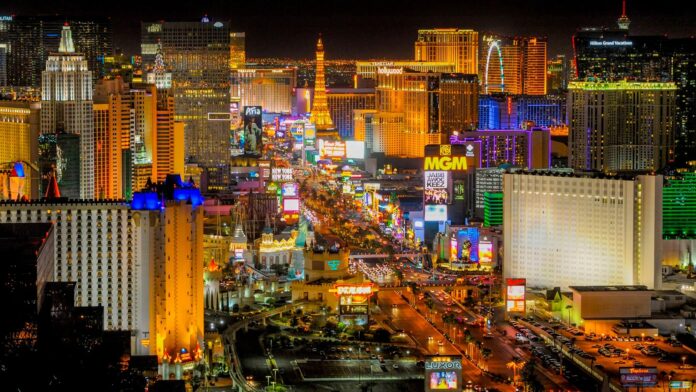Decline in Las Vegas Visitation: A Closer Look
Las Vegas has long been a beacon for tourists, known for its vibrant nightlife, elaborate casinos, and world-class entertainment. However, recent data reveals a concerning trend for the city’s tourism industry. According to the Las Vegas Convention and Visitors Authority (LVCVA), March witnessed a 7.8% decrease in visitation compared to March 2024, marking the third consecutive month of decline.
Understanding the Numbers
In March 2025, approximately 3.4 million visitors graced the city, a significant dip following an 11.9% decline recorded in February. It’s important to note that February’s figures may not be entirely indicative of a downward trend as that month was buoyed by the Super Bowl and an extra leap day. A less dramatic fall of just 1.1% was registered in January when compared to the previous year.
Kevin Bagger, the director of the LVCVA Research Center, attributes this ongoing decline to a less robust event calendar as well as uncertainties resulting from evolving federal policies impacting both domestic and international travel markets. The current state of affairs has sparked concern, with officials anticipating a decrease in room tax revenue in upcoming budget discussions.
Convention Attendance: A Bright Spot
Despite the overall visitor decline, there is a silver lining. Convention attendance has surged by 10.2%, bringing in 533,900 attendees. Notably, significant events like the Healthcare Information & Management Systems Society conference, which attracted 48,000 attendees, have played a role in this increase. Yet, the average daily room rate saw a modest rise of 3.1%, landing at $183.86 per night, showcasing a mixed bag of developments within the hospitality sector.
For the first quarter of 2025, visitor volume remains down by 6.9%, with total visitors reaching 9.7 million. Convention attendance fell by 1.6% to 1.8 million compared to the same period last year. Additionally, the average daily rate for hotel rooms decreased by 8.1% to $188.52, while hotel occupancy dropped slightly by 0.9 percentage points to 81.8%.
Airport Traffic Declines
Compounding the situation, Harry Reid Airport reported a 3.9% decline in passenger traffic for March 2025 compared to the same month the previous year. This marks the airport’s second consecutive month of reduced traffic. Low-cost carriers, particularly from Canada, have faced steep declines; WestJet’s traffic fell by 14.5%, Flair by 62.2%, and Air Canada by 5.9%. Aeromexico also experienced a notable decrease of 17.9%.
While it’s premature to pinpoint the precise reasons behind the drop-off in Canadian and Mexican visitors, there are speculations that escalating U.S. political tensions and pending tariffs could be influencing travel decisions. As discussions around economic policy and international relations evolve, so too might the willingness of potential visitors to traverse the border and visit Las Vegas.
Anticipated Revenue Drops
The LVCVA is bracing for a reduction in room tax revenue due to the decline in visitation. Jeremy Aguero, principal analyst at Applied Analysis, shared insights indicating that diminished foreign travel, especially from Canada and Mexico, alongside waning consumer confidence, could lead to further dips in tourism numbers. With a projected 5% decline in room tax revenue on the horizon, the LVCVA’s upcoming budget discussions will reflect an anticipated $360 million in room tax, meaning a potential $18 million revenue drop.
LVCVA president Steve Hill described this budgetary adjustment as a "conservative approach," recognizing the growing challenges facing international tourism. Although Hill remains cautiously optimistic—stating that a single month of decline does not establish a trend—he acknowledges lingering concerns about potential tariffs alienating valuable visitors.
Looking Ahead
As Las Vegas navigates this precarious period, stakeholders remain focused on adapting to changing tourist behaviors and external economic factors. Continued monitoring of visitor metrics and industry trends will be crucial in strategizing for a recovery that reconnects the iconic city with its global audience.
